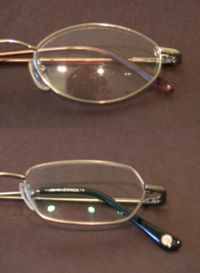
Photo from wikipedia
Here the possibility of utilizing X‐ray reflectivity for visualization with ≈µm spatial resolution of a surface with a heterogeneous electron density due to a partial coverage by another nanometrically thin… Click to show full abstract
Here the possibility of utilizing X‐ray reflectivity for visualization with ≈µm spatial resolution of a surface with a heterogeneous electron density due to a partial coverage by another nanometrically thin material is demonstrated. It requires the sample to be convexly bent, thus reflecting the collimated incident beam onto a magnified image recorded by a position‐sensitive detector. By the use of a small, intense, and parallel beam such as provided by the most recent synchrotron sources, one can record such spatially resolved X‐ray reflectivity with 0.1–1 kHz frame rate. The use of the method for in situ, time‐resolved characterization of single‐layer graphene domains during their chemical vapor deposition on a naturally curved surface of a liquid copper drop is demonstrated. This method can follow the growth kinetics, including the coverage ratio, 2D crystal (flake) sizes, and distances between flakes. By taking a single scan, the individual X‐ray reflectivity curves can be reconstructed, of both covered and noncovered parts of the surface, allowing to deduce the corresponding electron density profiles perpendicular to the surface. The technique has a promising perspective for in situ study of 2D materials, ultrathin films, and self‐assemblies on liquid as well as solid surfaces.
Journal Title: Advanced Materials Interfaces
Year Published: 2023
Link to full text (if available)
Share on Social Media: Sign Up to like & get
recommendations!